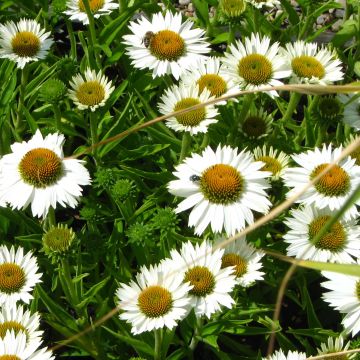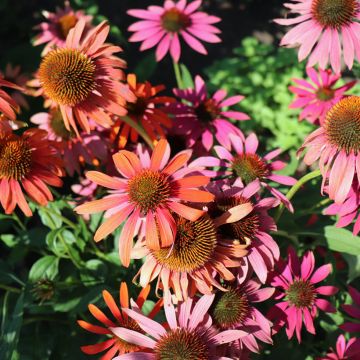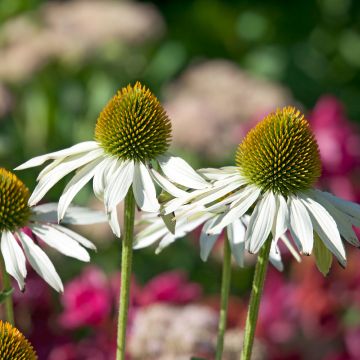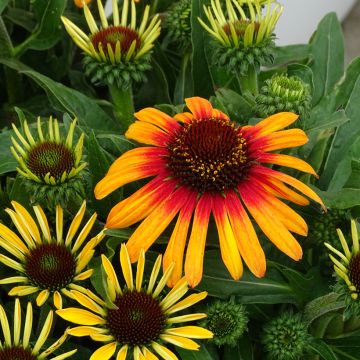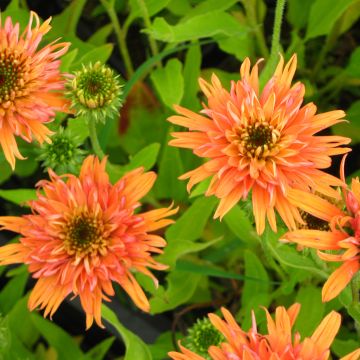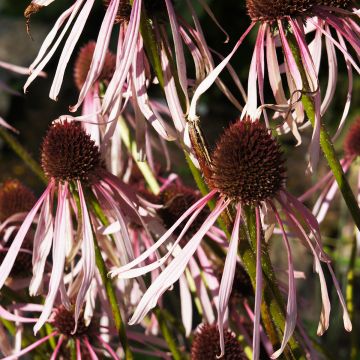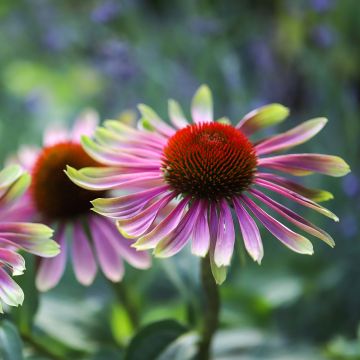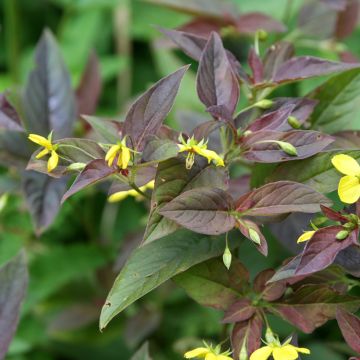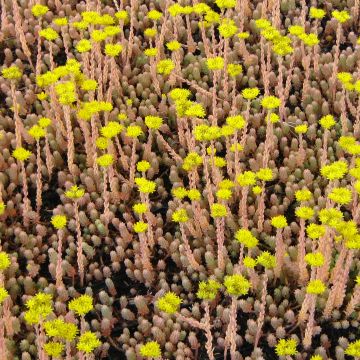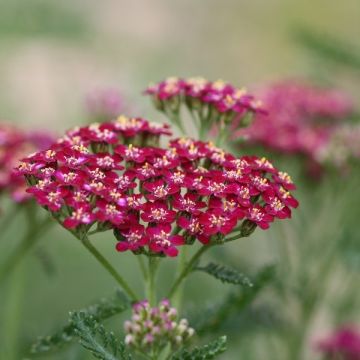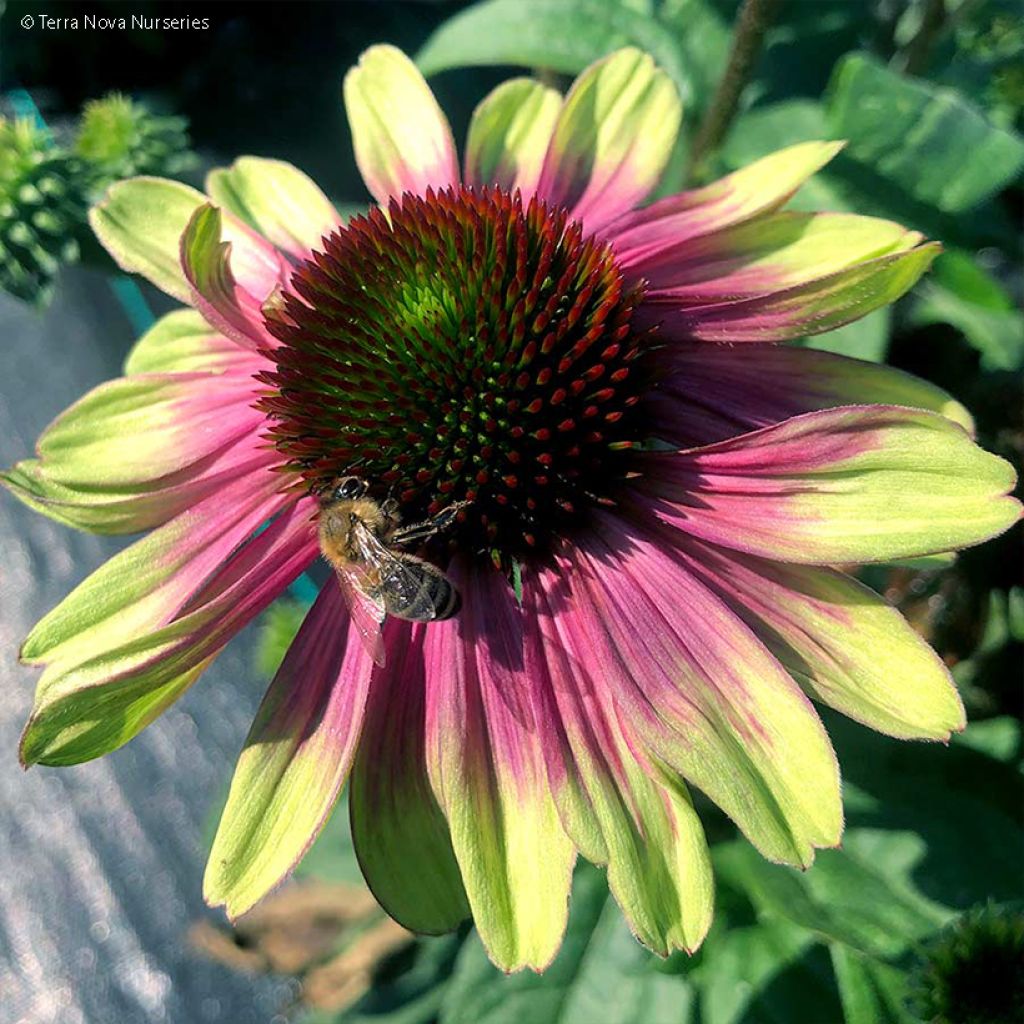

Echinacea Sweet Sandia - Rudbeckia


Echinacea Sweet Sandia - Rudbeckia


Echinacea Sweet Sandia - Rudbeckia


Echinacea Sweet Sandia - Rudbeckia


Echinacea Sweet Sandia - Rudbeckia


Echinacea Sweet Sandia - Rudbeckia
Echinacea Sweet Sandia - Purple Coneflower
Echinacea x purpurea Sweet Sandia
Purple Coneflower, Eastern Purple Coneflower
I ordered a young plant and upon arrival, only roots, so very disappointed. I'm waiting to see if any leaves will emerge. Regards
Anne-Marie , 02/05/2023
This item cannot be shipped to the selected country
Delivery charge from €5.90
More information
Schedule delivery date,
and select date in basket
This plant carries a 12 months recovery warranty
More information
We guarantee the quality of our plants for a full growing cycle, and will replace at our expense any plant that fails to recover under normal climatic and planting conditions.
From €5.90 for pickup delivery and €6.90 for home delivery
Express home delivery from €8.90.
Does this plant fit my garden?
Set up your Plantfit profile →
Description
Echinacea Sweet Sandia is undoubtedly one of the most astonishing novelties among Rudbeckias. This selection produces single flowers with wide petals that evoke a slice of watermelon with their green, pink, and red colours. Its compact habit and numerous flowering stems make it a perfect fit for gardens and terraces. It is a robust perennial that blooms throughout the summer. As beautiful as it is generous, this plant feeds pollinators and birds such as the elegant goldfinch, who enjoy its seeds.
Native to the Western United States, from Georgia to Michigan, passing through Oklahoma and Ohio, the Rudbeckia purpurea is a perennial with a strong character, unlike anything known, but confidently colonizes rocky meadows, savannas, clear undergrowth, and roadside edges in its natural habitat. 'Sweet Sandia' is a hybrid form derived from this robust pioneer, among others. It forms a dense and compact clump, reaching a height of 50-60 cm (20-24in) and a width of 40-50 cm (16-20in). This plant does not weaken or collapse, showing excellent posture. The opposite lanceolate, dark green leaves, are covered in rough hairs. The abundant flowering takes place from July to October and is loved by butterflies. The branched stems are each topped with a solitary flower head with a prominent central red cone with orange hues which then turns brown. It is surrounded by bicoloured petals or ligules, dark pink bordered by lemon green. The fruit is an achene that releases seeds sought after by birds. This plant firmly and deeply anchors itself in the soil, thanks to its well-developed root system.
Rudbeckia Sweet Sandia can be grown in pots or in open ground. This perennial can be nestled in mixed borders with other varieties of echinaceas or in the company of inulas, compact tritomas, yarrows, daisies, Echinops, and coreopsis... Lighten the scene by mixing in some ornamental grasses such as Stipa tenuifolia. Splendid in borders, the beautiful colours of echinacea are also highly appreciated in fresh or dried flower bouquets.
A medicinal plant: In homoeopathy, the root of echinacea is used to fight colds and strengthen the immune system. These properties were first used by Native Americans. The name Echinacea comes from the Greek word echinos, which means "hairy or like a hedgehog," and acea, meaning "having the shape of," referring to the appearance of the flower's centre.
Report an error about the product description
Flowering
Foliage
Plant habit
Botanical data
Echinacea
x purpurea
Sweet Sandia
Asteraceae
Purple Coneflower, Eastern Purple Coneflower
Cultivar or hybrid
Other Echinacea - Coneflower
Planting and care
Echinacea Sweet Sandia sometimes takes time to establish as its growth is rather slow. But once in place, it requires no particular care and is very resistant to pests and diseases. It is best planted in spring, in a sunny location, in a mix of potting soil and garden soil. The soil should be deep and loose to accommodate its root system. Remove faded flowers as they appear to prolong flowering. Divide the clump when flowering slows down. It is a rhizome plant that can become invasive. As the plant ages, it becomes more susceptible to aphid attacks and powdery mildew. Mulch the base in May to keep it moist in summer, as it is sensitive to water shortage during flowering.
Planting period
Intended location
Care
-
, onOrder confirmed
Reply from on Promesse de fleurs
Summer flowering perennials
Haven't found what you were looking for?
Hardiness is the lowest winter temperature a plant can endure without suffering serious damage or even dying. However, hardiness is affected by location (a sheltered area, such as a patio), protection (winter cover) and soil type (hardiness is improved by well-drained soil).

Photo Sharing Terms & Conditions
In order to encourage gardeners to interact and share their experiences, Promesse de fleurs offers various media enabling content to be uploaded onto its Site - in particular via the ‘Photo sharing’ module.
The User agrees to refrain from:
- Posting any content that is illegal, prejudicial, insulting, racist, inciteful to hatred, revisionist, contrary to public decency, that infringes on privacy or on the privacy rights of third parties, in particular the publicity rights of persons and goods, intellectual property rights, or the right to privacy.
- Submitting content on behalf of a third party;
- Impersonate the identity of a third party and/or publish any personal information about a third party;
In general, the User undertakes to refrain from any unethical behaviour.
All Content (in particular text, comments, files, images, photos, videos, creative works, etc.), which may be subject to property or intellectual property rights, image or other private rights, shall remain the property of the User, subject to the limited rights granted by the terms of the licence granted by Promesse de fleurs as stated below. Users are at liberty to publish or not to publish such Content on the Site, notably via the ‘Photo Sharing’ facility, and accept that this Content shall be made public and freely accessible, notably on the Internet.
Users further acknowledge, undertake to have ,and guarantee that they hold all necessary rights and permissions to publish such material on the Site, in particular with regard to the legislation in force pertaining to any privacy, property, intellectual property, image, or contractual rights, or rights of any other nature. By publishing such Content on the Site, Users acknowledge accepting full liability as publishers of the Content within the meaning of the law, and grant Promesse de fleurs, free of charge, an inclusive, worldwide licence for the said Content for the entire duration of its publication, including all reproduction, representation, up/downloading, displaying, performing, transmission, and storage rights.
Users also grant permission for their name to be linked to the Content and accept that this link may not always be made available.
By engaging in posting material, Users consent to their Content becoming automatically accessible on the Internet, in particular on other sites and/or blogs and/or web pages of the Promesse de fleurs site, including in particular social pages and the Promesse de fleurs catalogue.
Users may secure the removal of entrusted content free of charge by issuing a simple request via our contact form.
The flowering period indicated on our website applies to countries and regions located in USDA zone 8 (France, the United Kingdom, Ireland, the Netherlands, etc.)
It will vary according to where you live:
- In zones 9 to 10 (Italy, Spain, Greece, etc.), flowering will occur about 2 to 4 weeks earlier.
- In zones 6 to 7 (Germany, Poland, Slovenia, and lower mountainous regions), flowering will be delayed by 2 to 3 weeks.
- In zone 5 (Central Europe, Scandinavia), blooming will be delayed by 3 to 5 weeks.
In temperate climates, pruning of spring-flowering shrubs (forsythia, spireas, etc.) should be done just after flowering.
Pruning of summer-flowering shrubs (Indian Lilac, Perovskia, etc.) can be done in winter or spring.
In cold regions as well as with frost-sensitive plants, avoid pruning too early when severe frosts may still occur.
The planting period indicated on our website applies to countries and regions located in USDA zone 8 (France, United Kingdom, Ireland, Netherlands).
It will vary according to where you live:
- In Mediterranean zones (Marseille, Madrid, Milan, etc.), autumn and winter are the best planting periods.
- In continental zones (Strasbourg, Munich, Vienna, etc.), delay planting by 2 to 3 weeks in spring and bring it forward by 2 to 4 weeks in autumn.
- In mountainous regions (the Alps, Pyrenees, Carpathians, etc.), it is best to plant in late spring (May-June) or late summer (August-September).
The harvesting period indicated on our website applies to countries and regions in USDA zone 8 (France, England, Ireland, the Netherlands).
In colder areas (Scandinavia, Poland, Austria...) fruit and vegetable harvests are likely to be delayed by 3-4 weeks.
In warmer areas (Italy, Spain, Greece, etc.), harvesting will probably take place earlier, depending on weather conditions.
The sowing periods indicated on our website apply to countries and regions within USDA Zone 8 (France, UK, Ireland, Netherlands).
In colder areas (Scandinavia, Poland, Austria...), delay any outdoor sowing by 3-4 weeks, or sow under glass.
In warmer climes (Italy, Spain, Greece, etc.), bring outdoor sowing forward by a few weeks.


































